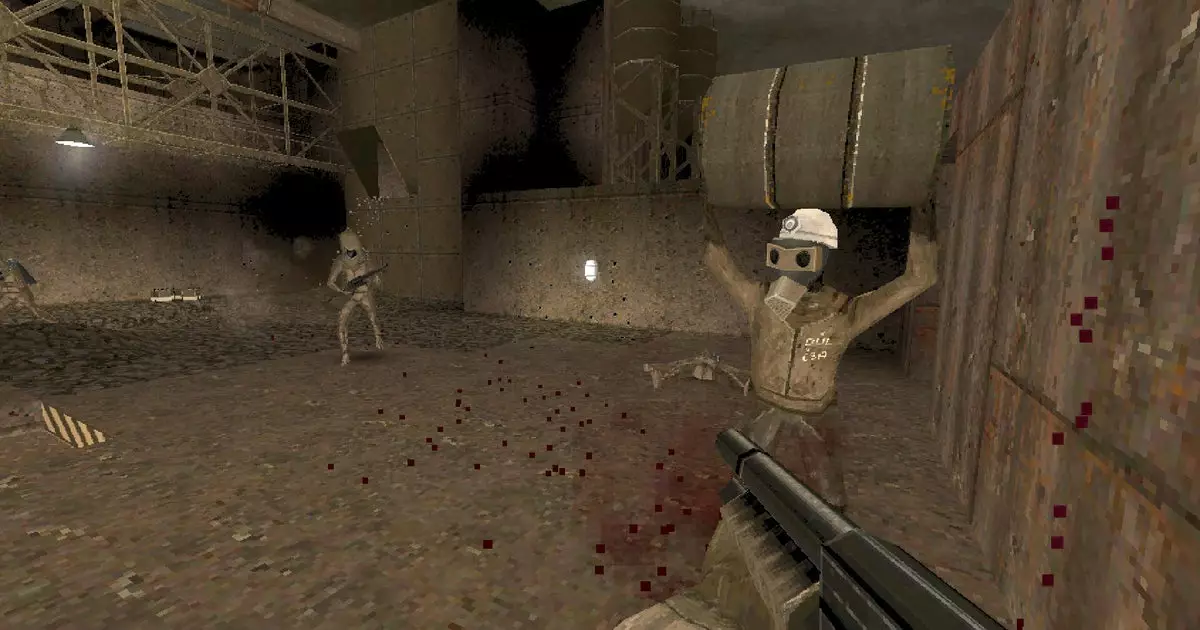Video games often thrive on immersing players in atmospheric worlds, where they forge connections with mechanics and narratives. Hrot, a shooter heavily influenced by Quake, has attracted attention not only for its gameplay but also for its idiosyncrasies—one of which turned out to be an infamously barking dog. As the game has evolved since its early access phase, a peculiar glitch that rendered some in-game canines into a perpetual barking loop called into question the balance between charm and annoyance in gaming. This article delves into this unusual bug and how it reflects broader themes in game development and player experience.
For over a year and a half, players of Hrot have been treated to a unique blend of socialist parody and action-packed gameplay. However, a significant challenge has emerged, as several players reported that certain dogs within the game barked continuously, creating an atmosphere that was more chaotic than endearing. Developer Spytihněv acknowledged these complaints in a candid update: while some gamers simply found the incessant barking irritating, others discovered that, on specific PC configurations, these adorable companions were stuck in a relentless cycle of woofing.
This glitch not only marred the aesthetics of the game but also impeded the overall enjoyment, especially during gameplay segments that involved interaction with these virtual dogs. Spytihněv lamented the bug’s survival for nearly two years, particularly in Linux environments where the presence of looping sound could render the levels featuring the dog ‘ratters’ maddeningly unplayable.
Hrot positions itself within a distinct narrative space, merging absurdity with cultural commentary. Players navigate post-apocalyptic representations of Czechoslovakia, where gameplay is punctuated by quirky features—such as kissing images of historical figures and combatting surreal enemies like gas-masked horses. Yet, the barking anomaly raises pertinent questions regarding the line between intentional design and unintentional glitch.
While developers aim to inject character and humor into their games, it’s crucial to ensure that such quirks do not detract from the overall experience. The barking dogs, for instance, were intended to add a layer of realism and whimsy, but instead transformed into a frustrating bug that tarnished the narrative and gameplay fluidity. This contradiction serves as a reminder for developers about the responsibilities that come with creating immersive experiences.
The community’s response to the barking issue has been a mix of frustration and humor. As gamers shared their experiences on platforms like Steam, it was evident that while some found it bothersome, others acknowledged the absurdity of the situation, which reflects the unpredictable nature of gaming culture. The developer’s recognition of the bug and its subsequent fix highlights the importance of maintaining open communication with players.
Acknowledging critical feedback can empower developers to innovate and improve, as seen when Spytihněv expressed regret over the bug’s persistence. Such transparency not only helps in rebuilding player trust but also informs future projects, allowing the developer to avoid similar pitfalls in their creations.
A Bright Future: Beyond Barking in Hrot and Beyond
With the barking issue addressed, Hrot looks poised to continue captivating players. It retains its signature charm—a blend of nostalgia and absurdity that speaks to a unique niche within the first-person shooter genre. Looking ahead, the developer has already ventured into new territories with projects like Shrot, a retro RTS that carries on the quirky legacy of Hrot but transports players to a different realm altogether.
As gaming evolves, balancing creativity with technical feasibility will remain a challenge, underscoring the importance of continuous player feedback. Hrot’s barking dog saga serves as a valuable lesson for both developers and players in understanding the intricate dance between innovation and imperfection in the world of gaming. Ultimately, it is these very imperfections that often give rise to memorable experiences, weaving the fabric of the expansive gaming landscape.

